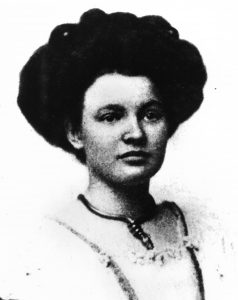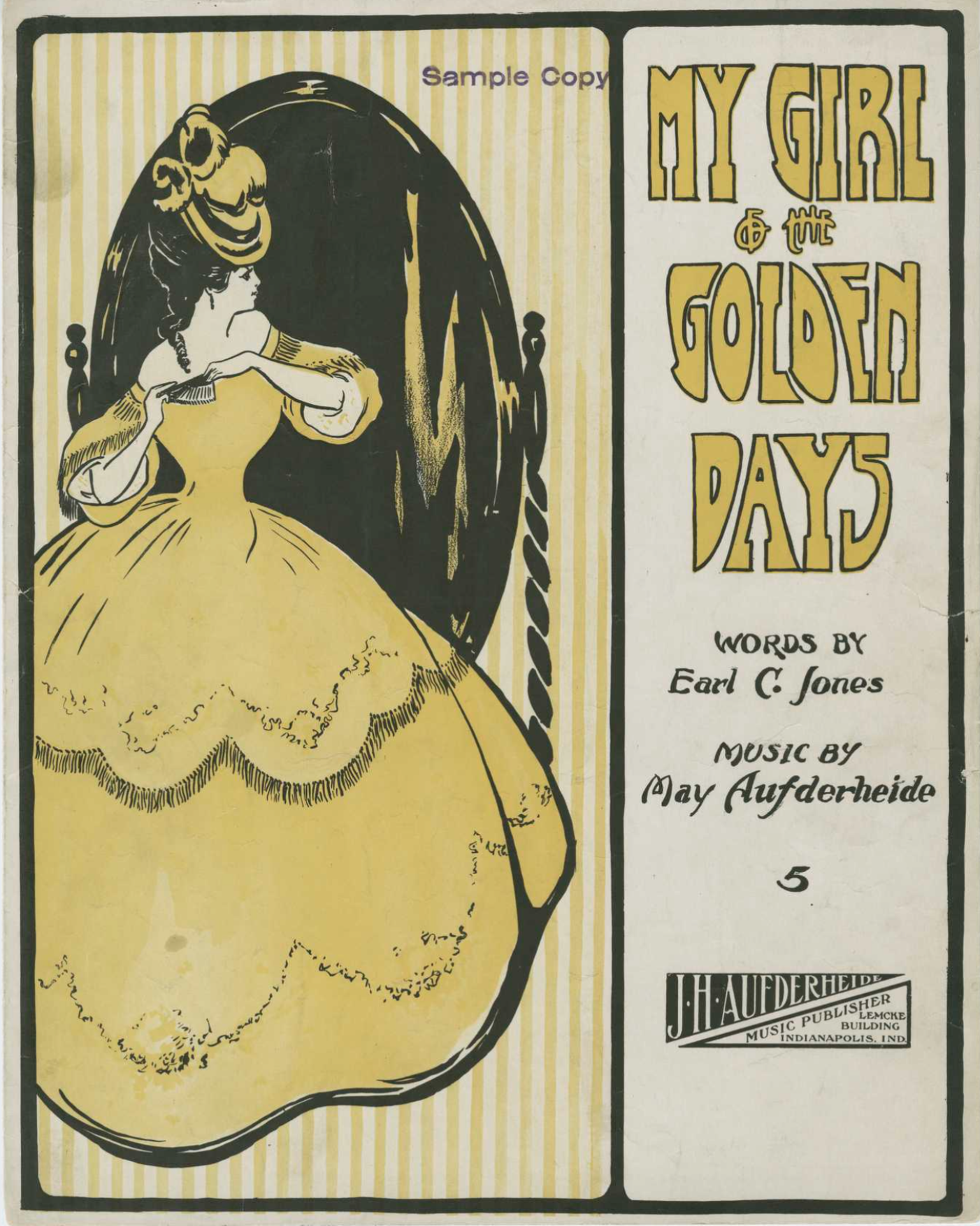
Photo info ...
(May 21, 1888-Sept. 1, 1972). Daughter of John Henry and Lucy Deel Aufderheide of Indianapolis, May was raised in a middle-class family. Her father owned the successful Commonwealth Loan Company and supported local arts organizations. May studied classical piano with her aunt, May Kolmer, a pianist with the Indianapolis Symphony. She later attended an eastern finishing school and traveled through Europe with her parents before returning to Indianapolis.

In March 1908, May married architect Thomas Kaufman of Richmond, Indiana. Shortly thereafter she published her first composition, “Dusty Rag,” issued by the Duane Crabb Publishing Company of Indianapolis. Sales of May’s music encouraged her father to enter the music publishing business. Though criticized as a vanity press for his daughter’s compositions, John H. Aufderheide and Company became an important publisher of Indiana composers between 1908 and 1913.
In her early 20s, May fit the youthful profile of composers. She published 19 pieces between 1908 and 1912, 7 of which were financial successes. The New York-based reported in 1909 that the “talented Indianapolis girl is achieving [an] enviable reputation” for her classic rags. Her most popular tunes, composed during her residence in Richmond, were “Dusty Rag” (rag and song, 1908); “Thriller Rag,” “The Richmond Rag,” and “Buzzer Rag” (1909); “A Totally Different Song” (rag and song, 1910); “Blue Ribbon” (1910); and “Novelty Rag” (1911).
Around 1913 the Kaufmans left Richmond and returned to Indianapolis where Thomas gave up his architecture career and joined the Commonwealth Loan Company. For reasons unknown even to her family, May ended her music career at that time. The Kaufmans moved to Pasadena, California, in 1947, where May spent her last years confined to a wheelchair after suffering numerous strokes.
CITE THIS ENTRY
APA:
Vanderstel, S. D. (2021). May Frances Aufderheide. Encyclopedia of Indianapolis. Retrieved Jan 4, 2026, from https://indyencyclopedia.org/may-frances-aufderheide/.
MLA:
Vanderstel, Sheryl D. “May Frances Aufderheide.” Encyclopedia of Indianapolis, 2021, https://indyencyclopedia.org/may-frances-aufderheide/. Accessed 4 Jan 2026.
Chicago:
Vanderstel, Sheryl D. “May Frances Aufderheide.” Encyclopedia of Indianapolis, 2021. Accessed Jan 4, 2026. https://indyencyclopedia.org/may-frances-aufderheide/.

Help improve this entry
Contribute information, offer corrections, suggest images.
You can also recommend new entries related to this topic.